The iconic Wellington Cable Car between Lambton Quay and Kelburn is one of Wellington’s most beloved landmarks, but it is not the only funicular in the city. Many affluent homes in the city are equipped with their own private cable cars, and for some, this novel mode of transportation is the only mean of access to their homes.
Wedged between the hills and the sea, the city of Wellington at the south-western tip of the North Island, is one of New Zealand’s most important population centers. The city is home to some 200,000 residents, but if you take into account its sub-urban areas, the total population of Wellington comes to more than double. Being spread across hills, the city has limited amount of space and a lot of homes are built on slopes and on hilltops where access is difficult. In the past, these hard-to-reach homes were reachable only by stairs. Today, many home owners have installed small cable cars for better accessibility and comfort.
Photo: Access Automation
There were once approximately 300 private cable cars across Wellington’s hills, but after a cable car engine failed leading to a crash in 2005, the city introduced regulations and got rid of half of the city’s cable cars citing safety issues. Today, there are still around 150 private cable cars in the city.
Access Automation, the company that installed most of the private cable cars in the city, provides two kinds of cable cars. The cheapest and the most popular are the monorails with a simple box car riding up and down the hill on a single steel rail, less than 20 cm across. Dual rails are costlier but offers more stability and are capable of carrying more weight.
“Traditionally cable cars would just be a straight rail that would go up the hill, and people would modify the contour of the land to suit a straight line. We can make them bend and twist and follow the topography of the ground,” says Mark Galvin, the owner of Access Automation.
Photo: fangie2000/Flickr
Photo: Lesley Perry/Flickr
Most private cable cars are small and have a weight restriction of about 350 kg, which can present difficulties to emergency services staff.
“Two average firefighters and their full kit with some basic equipment is probably around about 250 kilos. Picture 2am, there’s no light, you’re trying to get a hose down there – there is a whole scenario of things that are challenging,” says Pete Burtonwood, a retired fire serviceman.
Nevertheless, in the past couple of years, the demand for cable cars has risen, as they can add value to a property. These cars have also become a necessity, because easily accessible sites in Wellington have become a rarity.
“It basically transforms what was a difficult, gnarly access, to something that really is fun and quite exciting. It’s a spectacular way to arrive home,” Galvin says.
Photo: Tom Law/Flickr
Despite its popularity, private cable cars is as expensive as it sounds. Installing one can cost about $150,000 to $200,000, depending on the terrain, and there are maintenance costs on top. Also, every six months you have to have it checked out, and once a year you have to get a warrant of fitness. The annual warrant of fitness itself costs $850.
“It costs more to maintain the cable car than a regular car, which we don’t even own, and it only travels about 20 meters. Each of the concrete foundations is $30,000 to $40,000 to replace so we were warned about keeping them tidy,” said Vogeltown resident Rose Lu.
“Exorbitant costs aside, I really do love the cable car,” Lu says. “There’s something very romantic about coming home late from a party, and deciding to take the cable car up to the house.”
Rose Lu on her cable car. Photo: The Guardian
Photo: The Guardian
Photo: Reddit
Photo: Tom Law/Flickr
Photo: Tom Law/Flickr
Photo: Tom Law/Flickr


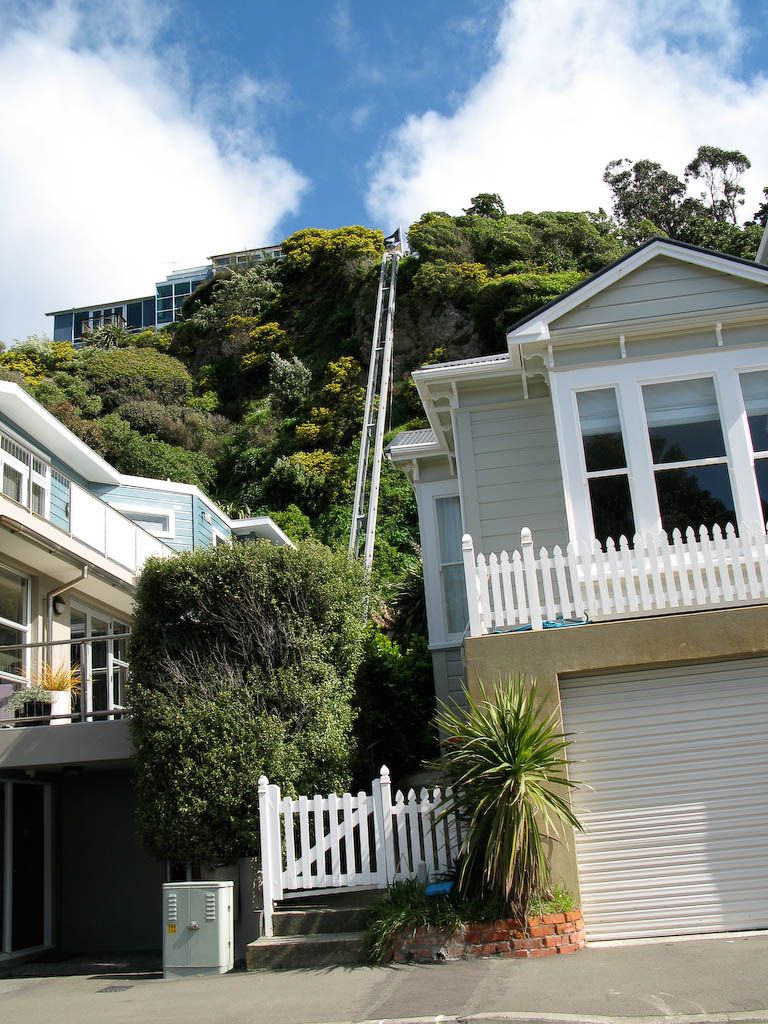


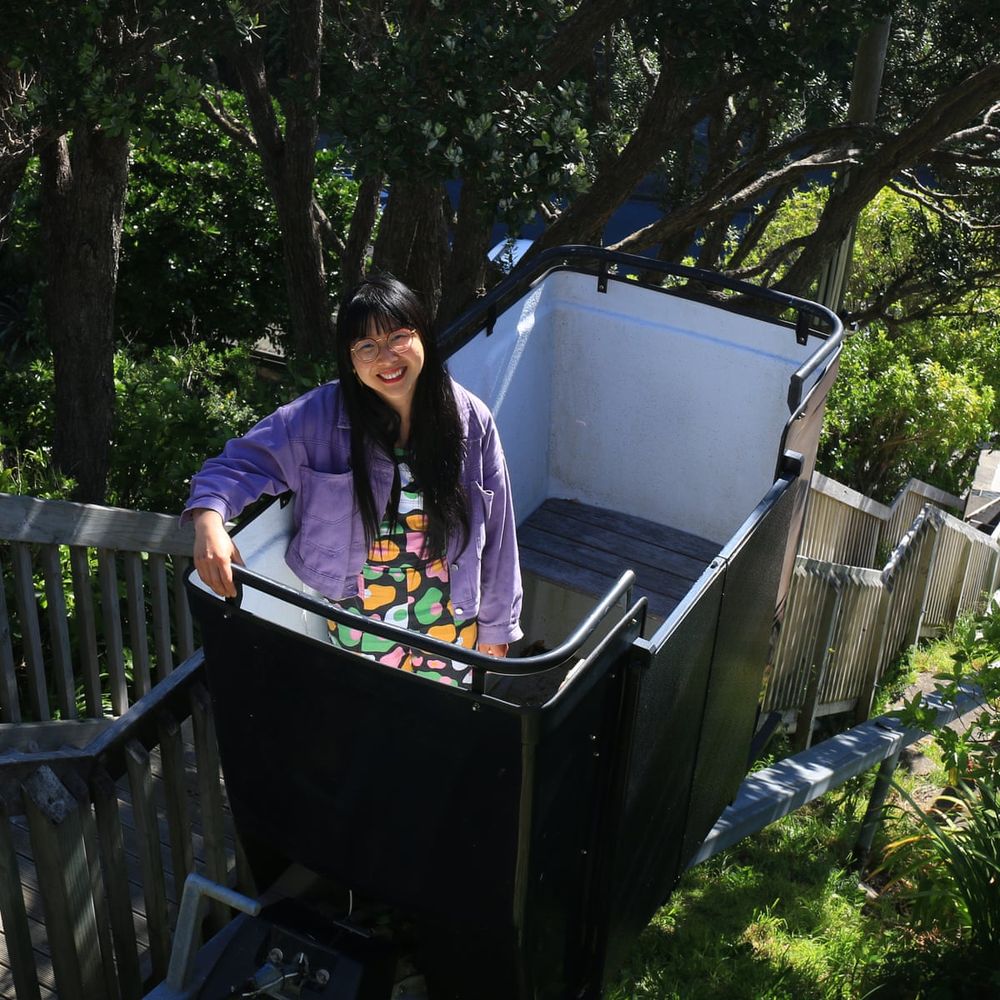
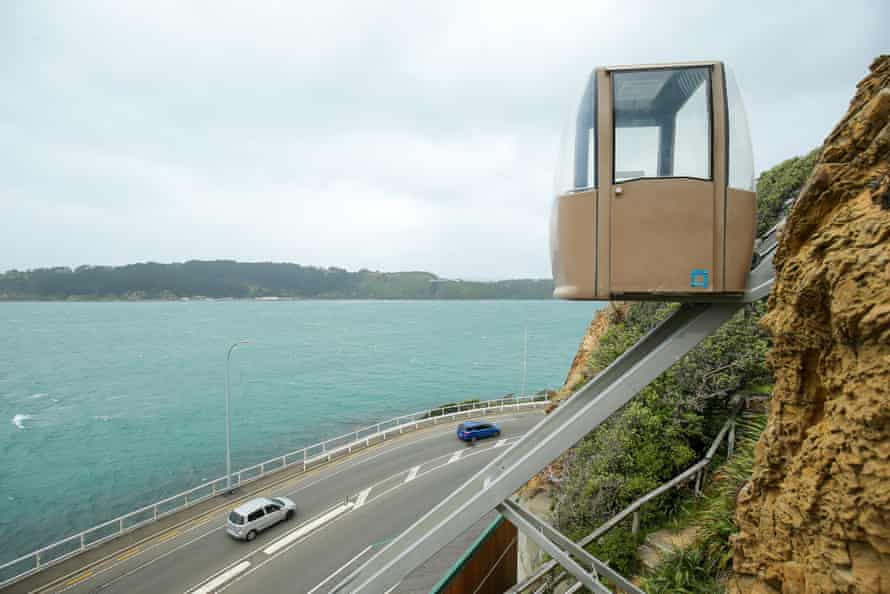
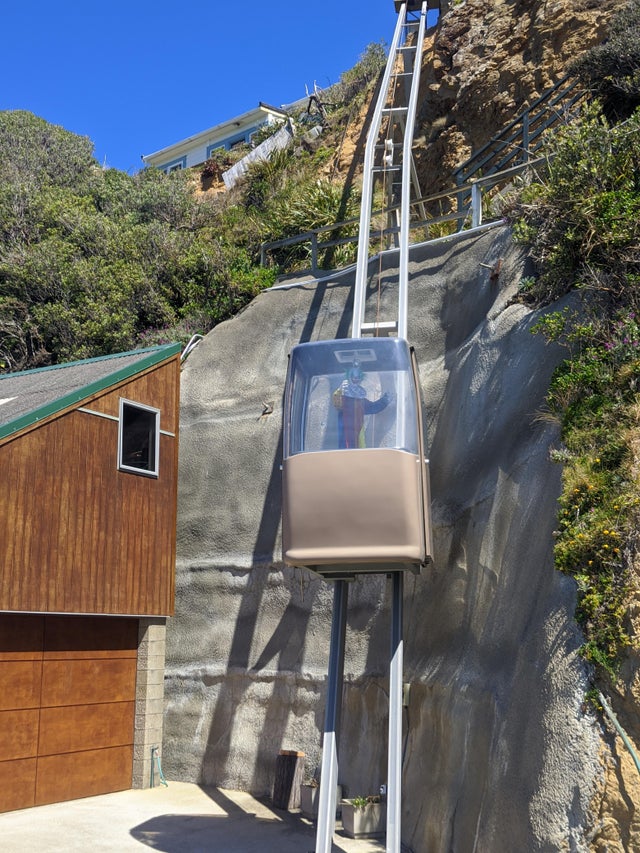

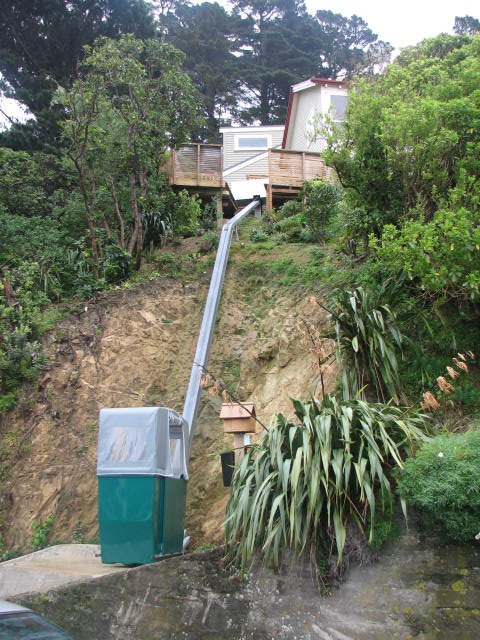















Wow! I love the little cable cars. What a great idea. I'd like one to get me up 10 steps into my home!;-)
ReplyDelete